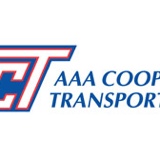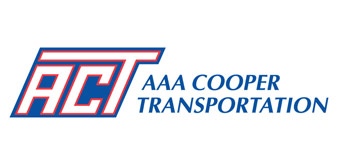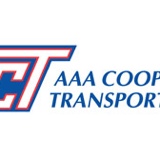Page 1
Terminal Information
-
Terminal
-
Terminal Manager Name
Inspection Information
-
Inspection Date
-
Date of Previous Inspection
-
Name of Person conducting inspection
Instructions for form completion:
-
Any entry marked as "no" which requires corrective action, must be identified in the comments following each section. All "no" entries made regarding previously identified areas needing attention must be marked with an asterisk (*) , and will require immediate action.
N/A = Not Applicable
Managers acknowledgement of Corrective actions needed:
-
I have read and discussed the items marked as needing corrective action. I understand that these require immediate attention. It is my responsibility to see that proper corrections are made so that we maintain compliance with all applicable regulations, both those of federal, state, and local agencies, as well as those set internally.
-
Date
Page 2
Fire Prevention and Emergency Action (General)
-
Are all exits marked with an exit sign of the proper size and illuminated by a reliable light source (electric or fluorescent are acceptable)
-
Is terminal equipped with emergency lighting, is it operable?
-
Are doors and stairs that are neither exits nor lead to exists appropriately marked? Ex. "Not an exit", "Basement", "Storeroom", etc?
-
Are all exits kept free of obstructions, not locked?
-
Are sufficient exits available?
-
Are workplace diagrams or maps posted showing escape routes, gathering area and written instructions?
-
Are emergency telephone numbers posted in conspicuous location? (Police, Fire, Medical)
-
Is an audible alarm system available? (Require if 11 or more individuals occupy the facility at one time)
-
Are fire extinguishers inspected monthly by an ACT employee and annually by an authorized company?
-
Does the inspection tag provide the name, phone number and certification number of the vendor?
-
Has the smoking policy been implemented?
-
Are smoking and non smoking areas clearly designated?
-
Are ashtrays supplied in smoking area and emptied frequently?
-
Is the smoking policy enforced by management and rules observed by employees?
Page 3
Health and sanitation (general)
-
Are eating facilities adequate and clean?
-
Are appliances such as microwave and refrigerator kept clean?
-
Can emergency response respond within 5 minutes?
-
Are ample trash containers available and emptied frequently?
-
Are restrooms clean?
-
Is adequate privacy afforded the users? Locks on doors, partitions, locks on individual stalls?
-
Are restrooms properly stocked? Toilet paper, hand towels, soap?
-
Are all restrooms equipped with lined trash containers?
-
Are first aid supplies readily available and adequately stocked?
-
In general, is noise ok?
Page 4
Electrical / Utilites room or area
-
Are permanent wiring panels and switched securely mounted and free of defects?
-
Are breaker or fuse boxes equipped with a cover?
-
Are all breakers or fuses labeled for use or location?
-
Are all vacant spaces in breaker or fuse boxes filled with blanks?
-
Is heating, cooling or water heating equipment clean and properly operating?
-
Does area in front of breaker panel have a 4 foot clearance?
-
Is the area clean and free from dirt, and combustibles or other cleaning supplies, etc. that could pose a fire threat?
-
Is the area well lighted?
-
No apparent overloading of outlets?
Page 5
Office
-
Are employees dressed within company guidelines?
-
Are all movements such as walking, climbing, use of stairs done in a safe manner?
-
Are office machines, vending machines and water machines grounded and in good repair?
-
Is ample work space available?
-
Are work stations designed with employee safety and health in mind?
-
Is office equipment used properly?
-
Is office equipment in good repair?
-
Are work areas kept clean and neat? free of wires or other tripping hazards?
-
Are unattended desk and file drawers kept closed?
-
Is only one file drawers opened at a time?
-
Are floors and aisle free from trash and debris?
-
Are floors and carpet dry and in good condition?no tripping or falling hazard?
-
Are stairways in good condition and stair railing s secure?
-
Are there sufficient trash containers? Are they emptied frequently?
-
Are office machines free of grease and dirt?
-
Are extension cords and wires free of kinks, splices, cuts and wear?
-
Are elevated storage areas or balconies posted as to maximum floor load capacity?
-
Are elevated areas or balconies equipped with guardrails, railings, or other suitable type of fall protection?
Page 6
Records keeping
Hazardous materials bills of lading
-
Sample period:
-
From
-
To:
-
Total number of hazmat bills checked:
-
This audit:
-
Last audit:
-
H/M not listed first or in contrasting color or designated by an x or rq in h/m column?
-
This audit:
-
Last audit:
-
Improper hazmat shipping name:
-
This audit:
-
Last audit:
-
Improper hazmat classification or not shown:
-
This audit:
-
Last audit:
-
Improper hazmat ID number or not shown
-
This audit:
-
Last audit:
-
Improper packing group or not shown:
-
This audit:
-
Last audit:
-
Proper shipping description not in required sequence: ISHP
-
This audit:
-
Last audit:
-
Nos or generic shipping names not further described with the technical name in ():
-
This audit:
-
Last audit:
-
Unit of measure for the amount shipped or not shown:
-
This audit:
-
Last audit:
-
Hazmat shippers certification not on bill or improperly worded:
-
This audit:
-
Last audit:
-
Shipping papers without an emergency response telephone number ( must specify the word emergency):
-
This audit:
-
Last audit:
-
Hazmat basic description not printed:
-
This audit:
-
Last audit:
-
Comments or PRO numbers checked:
Page 7
Dock
-
Are employees dressed properly? (Uniform shirt, shorts, if worn, of proper color and length, no. Loathing to allow or cause injury)
-
Is freight handled in such a manner to prevent injury?
-
Are all movements such as walking, climbing, and use of stairs and ladders done in a safe manner?
-
Is materials handling equipment being used properly?
-
Are safe work practices being observed? No horseplay, chance taking, running or jumping off dock?
-
Is dock free of trash and debris?
-
Ae there sufficient trash containers and are they emptied frequently?
-
Are floors clean, with no defects and free of spilled material?
-
Are stairs, ladders, and ramps in good repair, secure, equipped with hand holds or railings and free of trash and obstructions?
-
Are overhead doors operable and secure?
-
Are loading lights available at each door?
-
Are loading lights and wiring operable and free of defects?
-
Is freight stacked properly in vehicles?
-
Are vehicle interiors clean, free of hazards, damage, holes in floor, etc?
-
Is a dock plate available at each door? Is there an adequate supply of dock plate pullers?
-
Are chocks in use on all vehicles at the dock?
-
Are all anti- tilt stands, pins and pin keepers in sue on twin trailers?
-
Are all permanent isles clearly defined, marked, and free of freight and trash?
-
Is freight stacked properly on dock? Not likely to fall over and no overflow into aisles, not stacked more than 5 feet high at corners?
-
Is materials handling equipment properly stored, in good repair and free of dirt and grease?
-
Are dunnage and pallets stored neatly? No fire hazards?
-
Is overhead lighting adequate? Are all lights burning?
-
Is ample workspace available?
Page 8
Forklifts
-
Are forklifts in overall good condition?
-
Are forklifts inspected on a daily basis or at the beginning or end or each shift for 24 hour terminal?
-
Are forklift inspections maintained on file for 30 days and then destroyed?
-
Is each forklift equipped with:
-
An operating back up alarm?
-
An overhead guard (bolted down)?
-
Are seat belts operable and being used?
-
If equipped with a fire extinguisher, is it fully charged and properly mounted?
-
Are brakes, horn, mast, blades, tires and lights free of defects and in good operating condition?
-
Are forklifts free of water, oil or other fluid leaks?
-
Are forklifts operated in a safe manner?
-
Are forklifts operated by only trained, tested and certified personnel?
-
Do forklift drivers use handholds and footholds properly when getting on and off forklifts?
-
Are forklifts parked with brakes set, blades lowered flat to the floor, controls in neutral and engine off?
-
Is forklift refueling area in good order?
-
Are propane tanks stored in one designated area? Is the area protected from damage?
-
Is the storage area marked "no smoking" and does it bear the NFPA or other suitable sign identifying the hazard "Flammable Gas"?
-
Are safe work practices and personal protective equipment requirements observed when refueling forklifts?
-
Are all forklifts equipped with a specification plate indicating the weight capacity?
-
Are the certifications of repair being signed off?
Page 9
Terminal Yard
-
Is a speed limit sign posted? (Maximum 10 mph)
-
Is there a fasten seat belt sign posted at the exit gate?
-
Is there a no trespassing-right to search sign posted?
-
Do drivers and hostlers obey speed limits and traffic pattern?
-
Are only authorized drivers and vehicles on the yard?
-
Are drivers and hostlers wearing seat belts?
-
Do drivers and hostlers use hand holds and foot holds properly when getting in and out out tractors, trailers and hostlers?
-
Do hostlers and drivers check to assure path is clear before backing and yielding right of way?
-
Are tractors, trailers and converter gears parked in an orderly manner?
-
Are yard traffic patterns clearly communicated to drivers and hostlers?
-
Is the terminal yard and employee parking area free of trash and accumulation?
-
Are trash cans placed in convenient locations and emptied frequently?
-
Is the terminal yard and employee parking area free of holes, breaks,<br> Protrusions or other hazards?
-
Do all drains have adequate covers?
-
Are both the terminal yard and employee parking area adequately lighted?
-
Are all lights secure and burning?
-
Are hostlers inspections reports completed daily?
-
Do drain gutters channel water away from a walk-ways , steps etc?
Page 10
Terminal Security
-
Guards alert, require identification, know procedure for fire and or other emergency?
-
Guard house well lit, proper lights?
-
Fences in good condition, no overgrown areas, free of shadows?
-
Gates in good repair, unused gates locked?
-
Is there a secure cage , trailer, or area for high value items?
-
Is the secure location for high value kept locked and/or in full view of a supervisor?
-
Is overall terminal security adequate?
Page 11
Fueling area ( if none leave blank)
-
Are fuel pumps attend when in operation?
-
Is someone in control of the nozzle at the point of fueling?
-
Is the fuel island kept free of trash and spills?
-
Have provisions been made to prevent fuel from getting into drains in the event of a spill? (Adequate supply of non combustible absorbent, or engineering controls?)
-
Are trash containers available and emptied frequently?
-
Is lighting adequate?
-
Are pumps protected from drainage?
-
In the event of an emergency, is a cut off switch available in a location away from the pumps and clearly marked?
-
Is a properly charged and inspected fire extinguisher available near the fuel pumps? (15-25 feet)
-
Is the fuel area clearly marked as a no smoking area?
-
Are tanks checked regularly to insure no leaks?
-
If tanks are equipped with automatic monitors are they in proper working order? When was the last inspection done?
-
Are caution fuel storage and fueling instructions signs posted?
Page 12
Equipment
-
Is equipment clean and overall in good repair? (tread depth, windshield, placards, paint, etc.)
-
Are DVIR's completed on a daily basis?
-
Is a copy of the latest inspection in the cab of all equipment and the old one removed?
-
Does the annual inspection plate appear on all equipment and is it properly completed?
-
Does all power equipment have an ERG, Accident information packet, current insurance card, certificate of hazardous materials registration, alliance hazardous materials registration and post drug/alcohol testing packet?
Page 13
Hazardous Material Handling
-
Is a current emergency response guidebook on hand?
-
Do the employees know where the ACT written Hazard Communication Standard Program is located?
-
Are MSDS sheets available at all times?
-
Is there an ample supply of Hazardous materials labels and placards?
-
Does the terminal have a salvage drum or access to one in a reasonable amount of time?
-
Are the following supplies on hand:
-
Liquid proof gloves?
-
Tight fitting eye protection?
-
Adequate supply of non combustible absorbent?
-
Do supervisors understand they are not to respond to hazardous material emergencies without the guidance of risk management personnel?
-
Do supervisors know that risk management personnel are on call 24 hours a day and can be reached during non business hours?
-
Are placards applied and removed as required?
-
Are loading and storage restrictions observed?
-
Does all terminal personnel understand what hazmat commodities ACT does not transport?
-
Are hazardous materials loaded in such a manner as to protect them from damage by other freight or handling equipment?
-
Is a hazardous material storage area clearly designated on the freight dock and posted "no smoking" ? Is it at least 25 feet from the designated smoking area?
-
Is the hazardous materials area free of trash and freight?
-
Is the hazardous materials area inspected daily for leaking containers?
-
Are all personnel that are involved with the transportation of hazardous materials trained in accordance with applicable OSHA standards, dot regulations and company policy?
Page 14
Bulletin Boards
-
Are bulletin boards kept neat, clean and free of postings unrelated to Company Business?
-
Are the following required posters and notices displayed? (These are in addition to those already mentioned in other areas of this inspection)
-
Federal 5 in 1 poster?
-
Workers Compensation information including name of insurance carrier or license if state fund, how to report injuries and panel of physicians?
-
Any posters or notices required by local or state government?
Page 15
OSHA Requirements
-
Are OSHA record keeping requirements in order?
-
Current OSHA 300 log on file?
-
Previous 5 years OSHA 300 logs on file, complete and certified by manager?
-
Injuries/illness entries made on OSHA 300 log within 6 days?
-
All first reports of injury on file, kept separate from 300 log?
-
Is the previous year OSHA 300 log displayed at the appropriate time?
General Requirements
-
Is the terminal monthly self inspection report form being completed?











